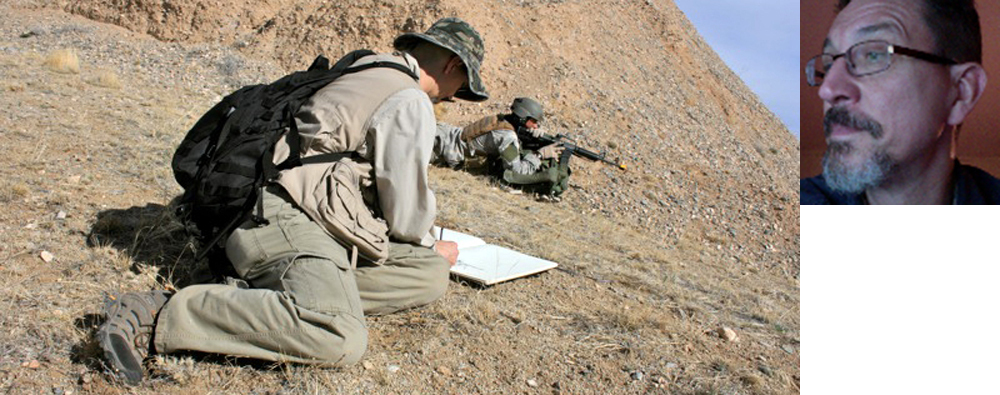Catching Up- Part 2
AUGUST 15, 2014
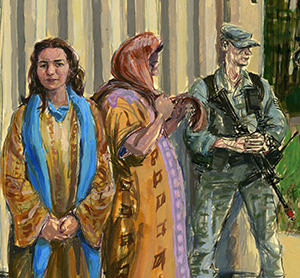
Once again, the Society of Illustrators will have its biannual exhibition in conjunction with the USAF Art Program beginning this September. The missions were very few these past two years a result of the sequester and government budget cuts. This year the Society will focus on exhibiting selected pieces from the USAF permanent collection. There will be some seriously stunning work highlighting the more than 60 years of working with the Air Force. There will also be a small showing of work from the one mission last summer at McGuire AFB/Fort Dix in New Jersey where Operation Eagle Flag training exercises were being held. A small group of Society illustrators were there documenting the event, and I'm happy to say I was part of that group. My sketchbooks were filled with plenty of false starts but enough visual information to create four finished pieces. All the drawings were dry-mounted to firmer board and then worked on with acrylics. Please check the Society's website for the dates of the exhibition. www.societyillustrators.org
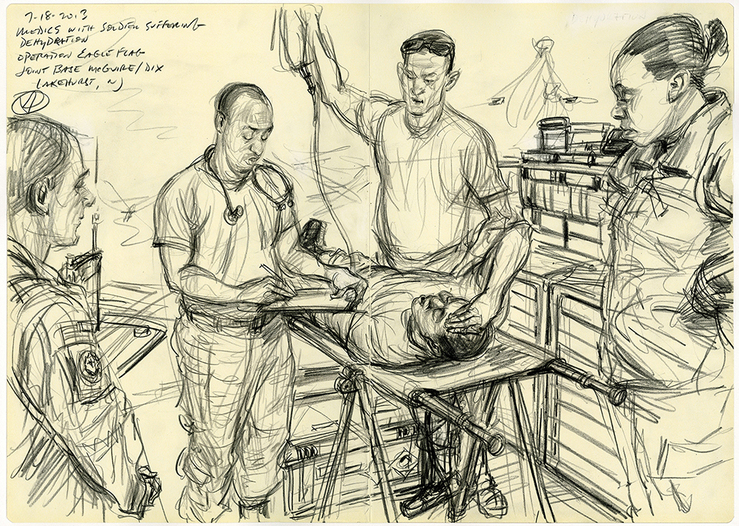
A case in point. This drawing was nearly 80% of what is seen here when everything abruptly changed over and had I not taken some video and photos, would have remained in a sort of limbo. Carefully extracting the pages from the moleskine large sized pad (11x17") I hot press mounted it to 4 ply Strathmore paper to protect against buckling and proceeded with a careful application of acrylics. Watercolor rarely responds well to moleskine paper on initial application but acrylics so far have not met that resistance.
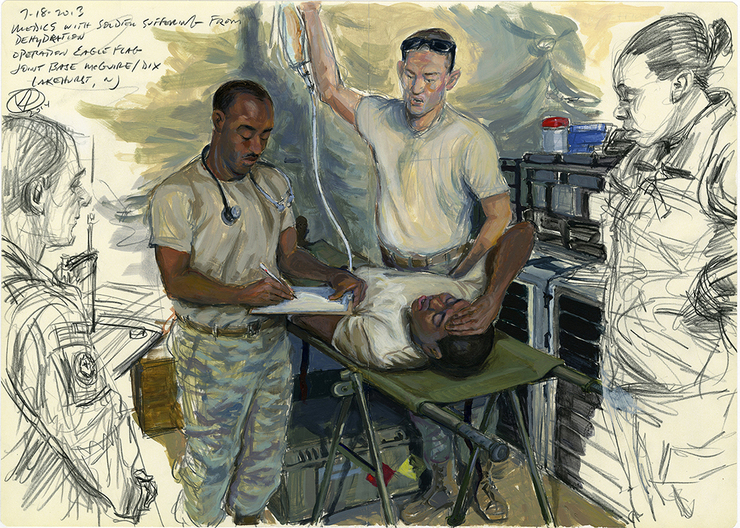
The hardest thing for me when working with color and paints is knowing when to stop. When enough has been said and anything else just turns the image into feeling like a rendering of a photo (as my mentor Bernie D'Andrea would caution me about). I stopped here. The focus was where I wanted it.
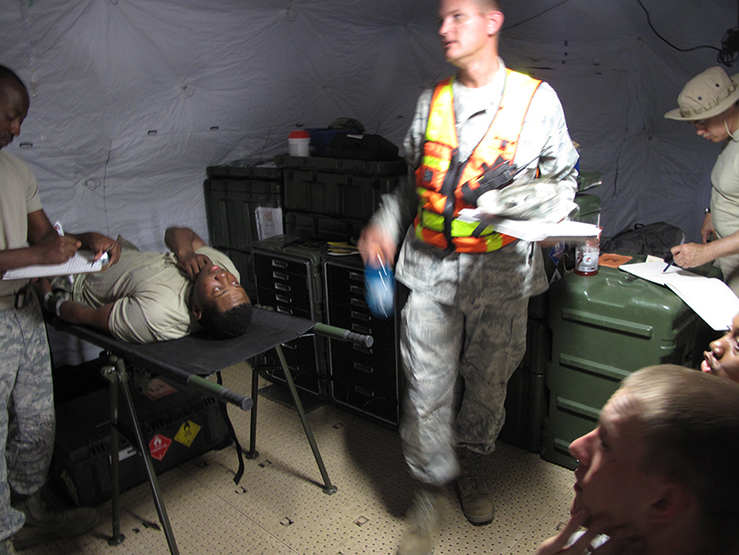
Nothing remained still. Even the soldier actually suffering from dehydration. This procedure surprisingly lasted longer than I had anticipated.
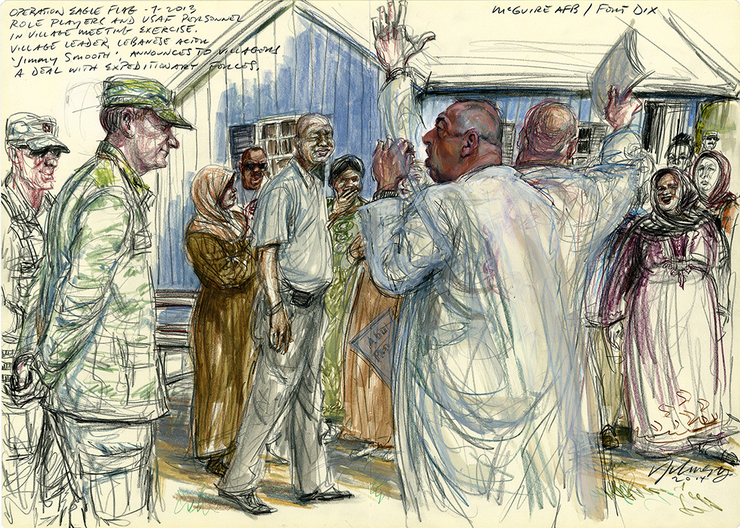
Similar situation. A fair amount of information sketched real fast trying to record an event moving quite fast. Probably the only people remaining relatively stationary during these few minutes were the members of the USAF unit who were training with the role players. Many of the role players are immigrants and bring a level of cultural authenticity to the exercises that hiring local actors could never match. Here, Lebanese actor/entrepreneur "Jimmy Smooth", as he was known to the troops, announces to the villagers that an agreement has been reach with the US forces.
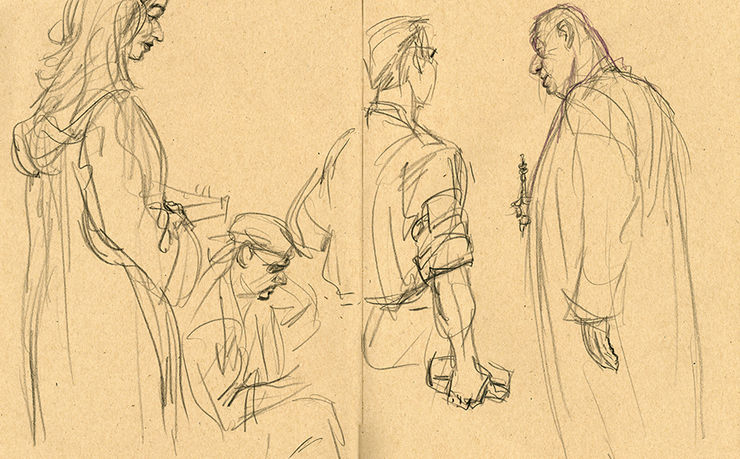
One of the many sketches that went nowhere and was over before the camera could even be called into play to record the specifics. Another view of "Jimmy Smooth" who sounded like the Lebanese version of Rodney Dangerfield. He rarely broke character except when the exercise was specifically called into recess. Otherwise, he, as well as the others, kept their interactions with the troops as real villagers which allowed them to create challenges that required the military personnel to figure out the proper response. All this would be observed by trainers who kept score and graded how our forces carried themselves. The critiques would come later.

SoI member Stephen Gardner draws and takes notes on how to properly smoke a hookah. SoI Government Services chairman, John Witt works the camera. There were overlaps with British forces also in training.
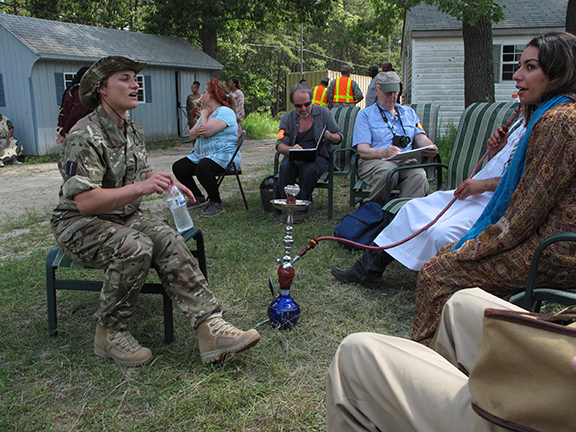
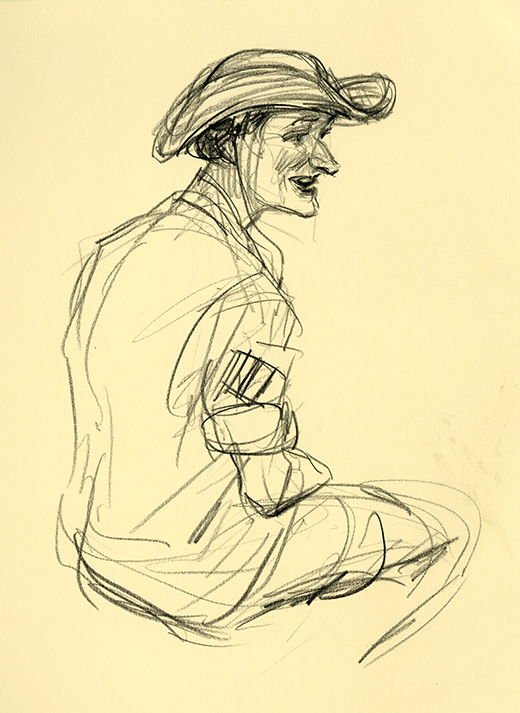
Unfinished but I think I caught her Pip Pip sort of character. Never found out her name but Millicent or Penelope would not have surprised me.
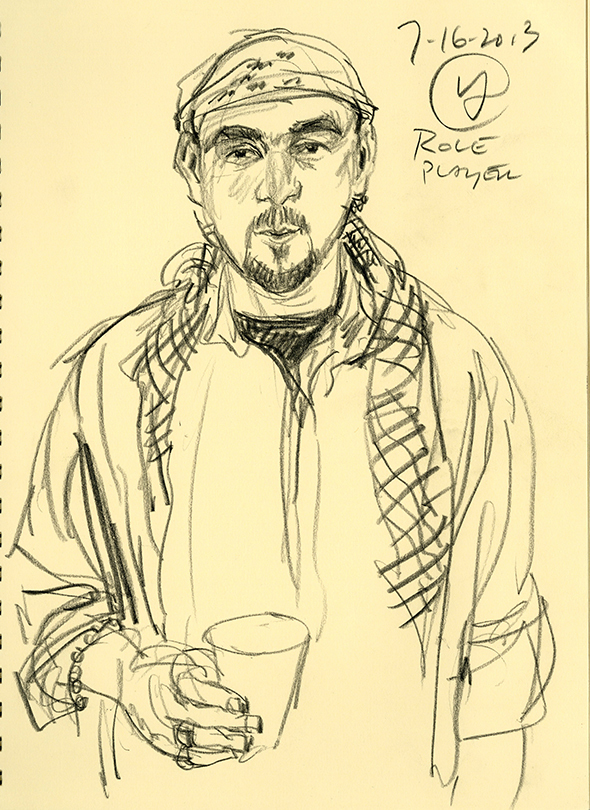



The guy with the cigar was Air Force role playing as town constable. The rest were actors. I found myself wondering at times about what was going through these immigrants' minds, lives disrupted, separated from their homelands. I had the strong impression from some that they thought we had Hollywood level connections and could get them discovered. It was almost like they were auditioning for us at certain points.

A number of the actors were African. This gentleman who played the town religious leader apparently was in actuality a Muslim cleric. Very soft spoken and gentle of spirit.
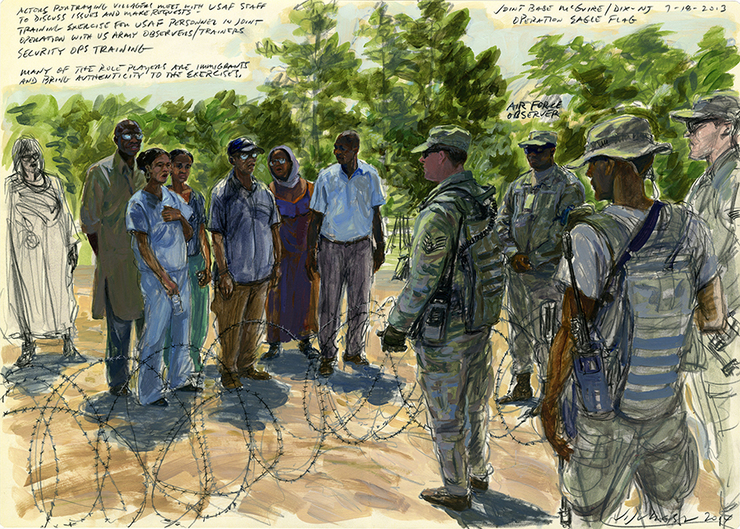
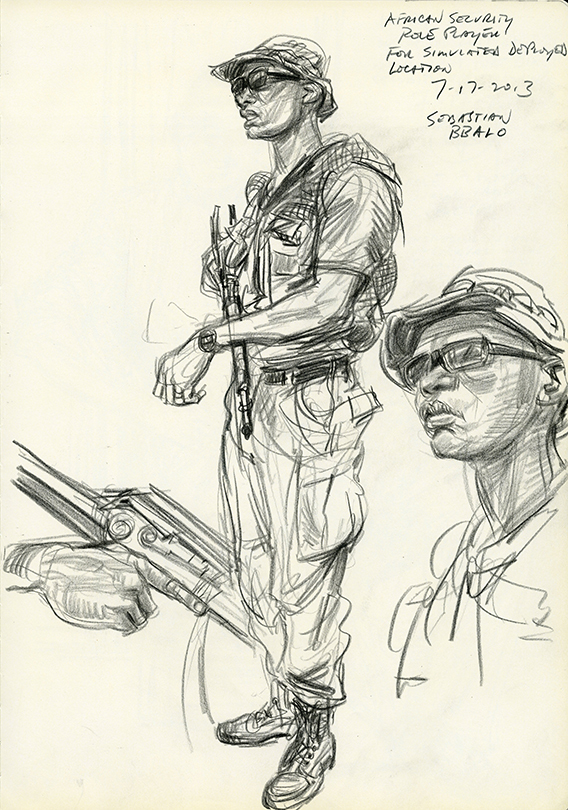

Henry Bith. A break in the exercises and time to sit in a wooden shack away from the aggressive sun. I was into the drawing for a few minutes as Henry continued speaking to me when I realized he was talking about having been one of the "Lost Boys of the Sudan". His story was one of great suffering and loss- having witnessed the annihilation of his family- and I found myself lost at times trying to understand how he got to America. But he got here, and with his wife, is trying to make a new life in the States. Another reminder of what we take for granted and what so many in this world must struggle through on a day to day basis. http://www.unicef.org/sowc96/closboys.htm

Henry Bith's wife. I never was entirely sure how she was reacting to my drawing her. Sometimes seeming embarrassed, other times annoyed.

The crew. Stephen Gardner, Jim Consor, John Witt, Cpl. Agarn, and Dennis Dittrich.

Never looks good. No matter how practical it may feel steadying a drawing pad (in this case a hard cover Moleskine) on crossed legs while drawing, it always winds up looking effete.
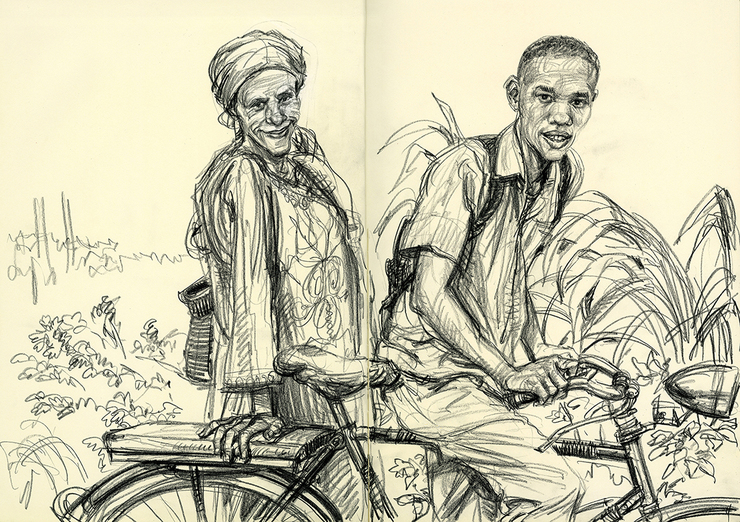
A couple of drawings still needing a few tweaks that were offered as incentives for a recent Foundation Rwanda fundraiser. Prints are to be sent to donors who contributed a certain amount. Apparently the response was very good. I'll be busy this September printing and mailing and grateful for the Epson 4880 in the studio. The drawings are based on photos by FR co-founder and photographer extraordinaire Jonanthan Torgovnik.
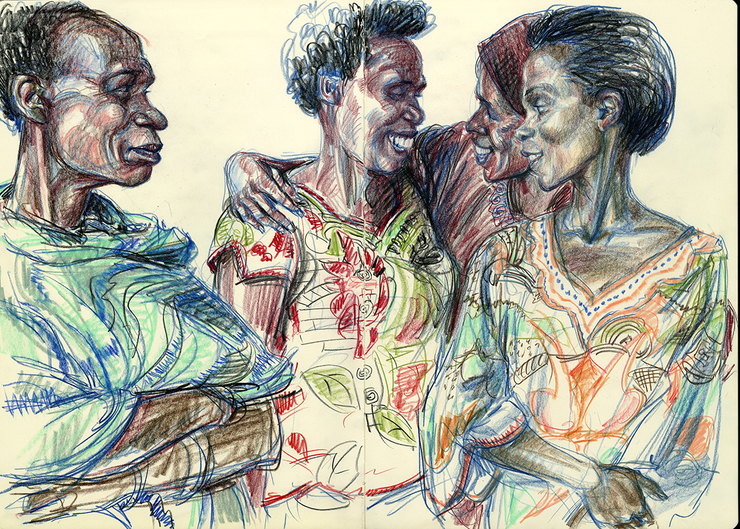
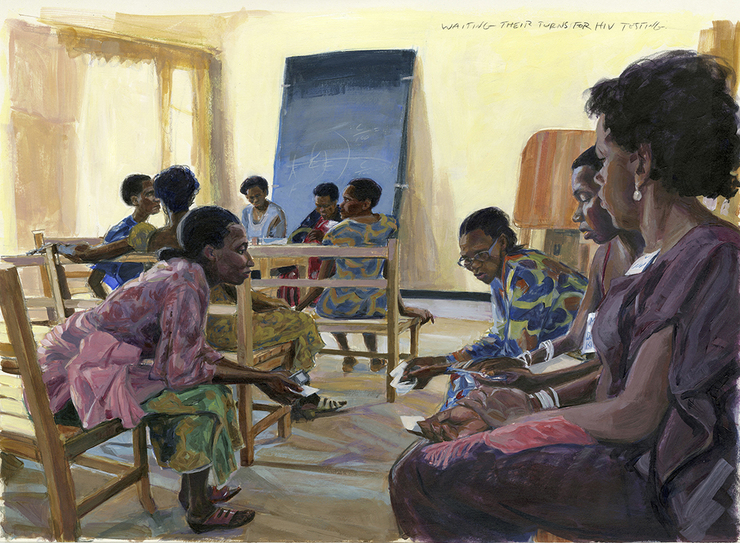
A painting of my own based on sketches at the clinic last year in Rwanda.

Ending this with a drawing found while rearranging files int he barn/studio. Current SSGT Ben as he was at 2 1/2 years old.
© 2024 Victor Juhasz
